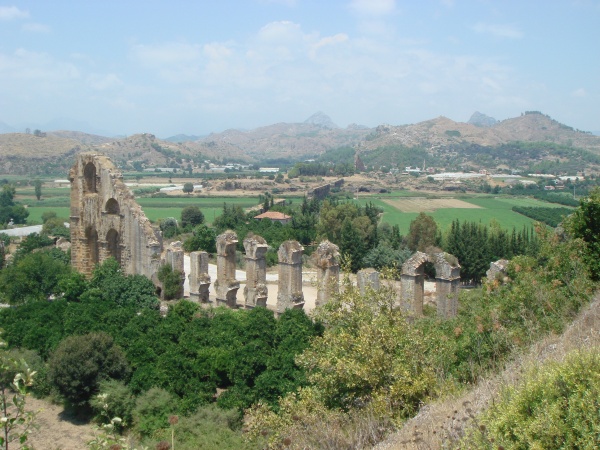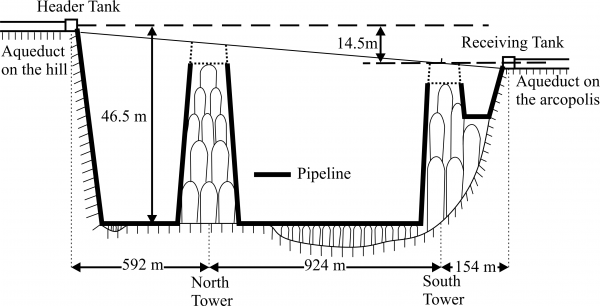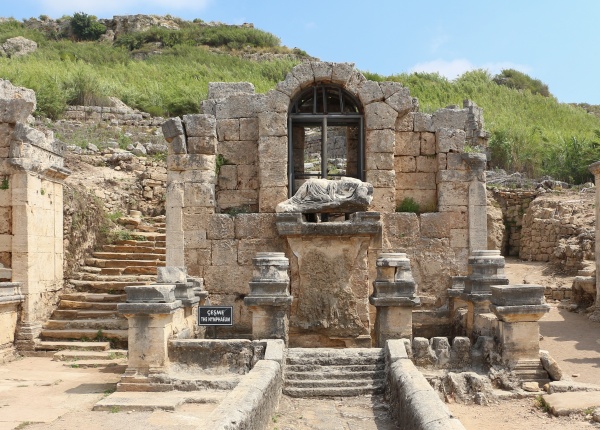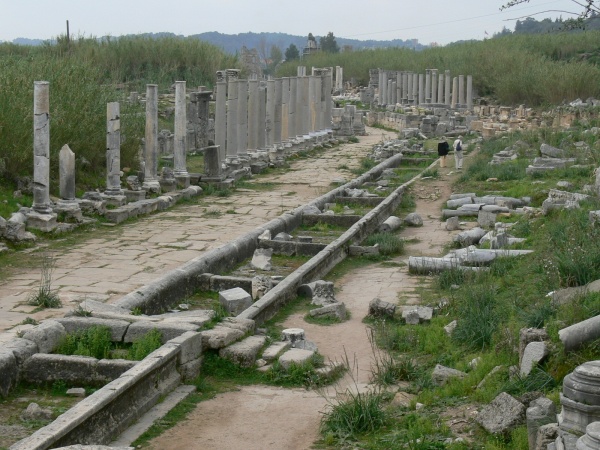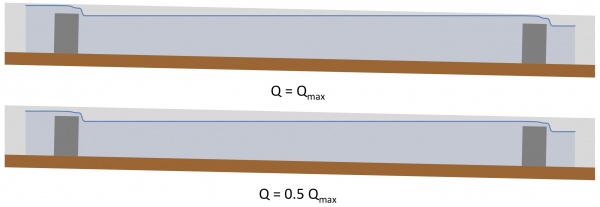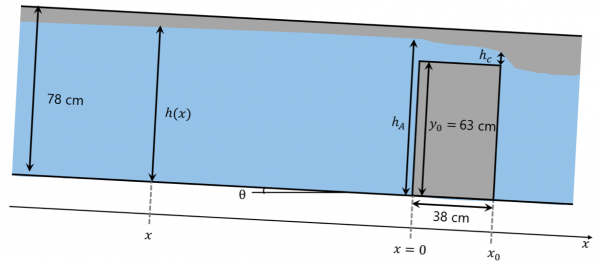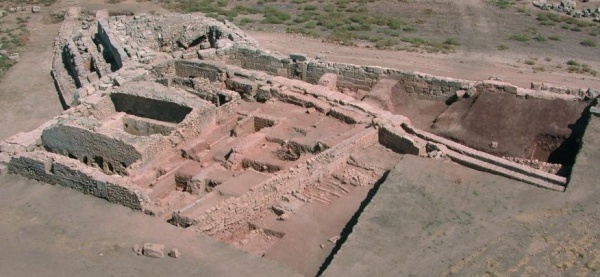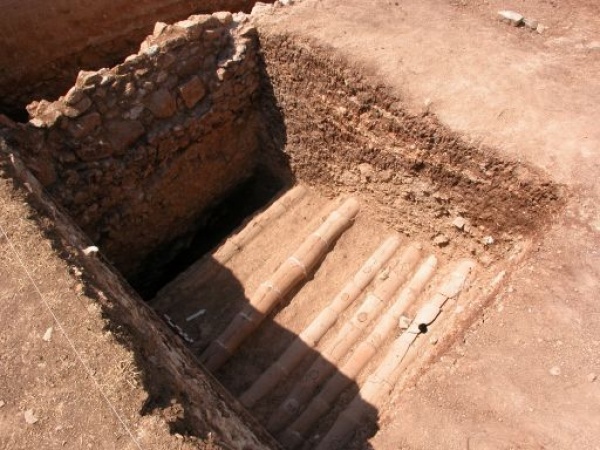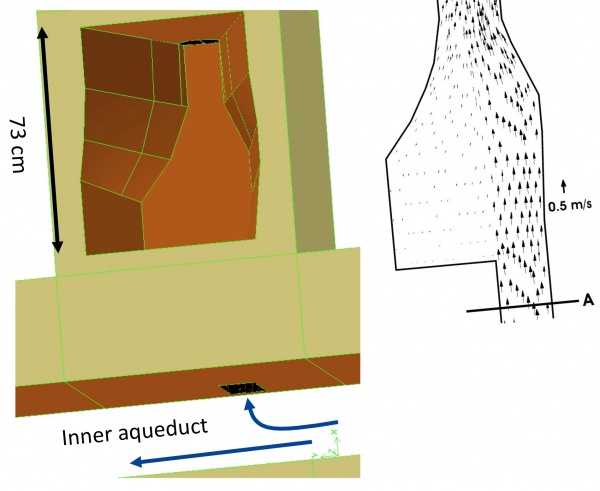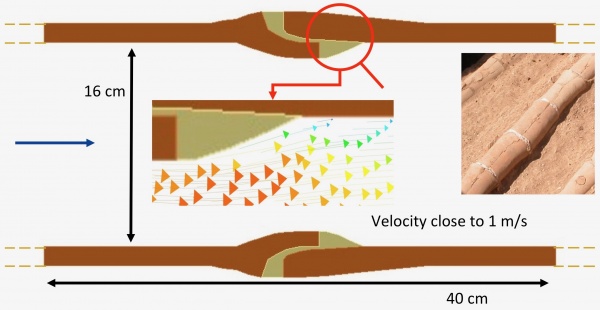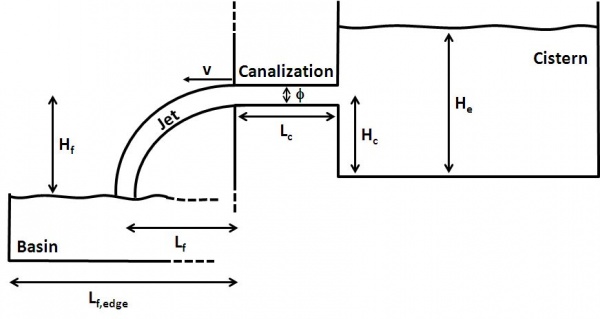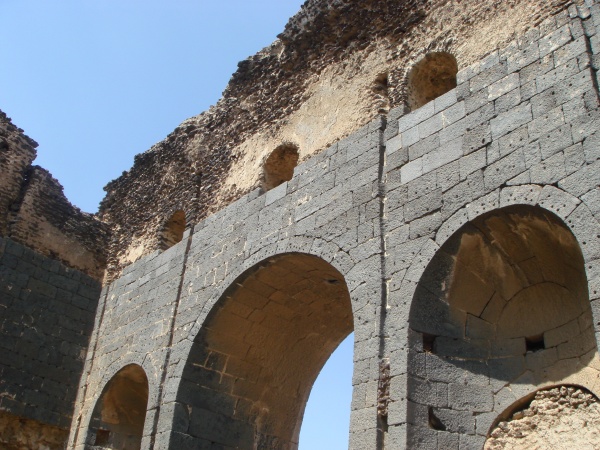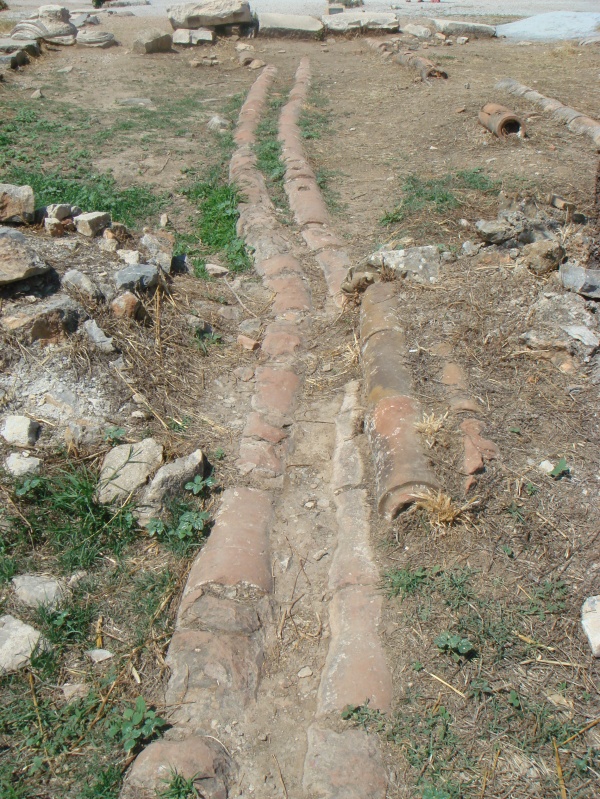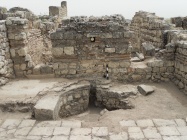
Ancient hydraulic systems
Presentation
For several years, we have developed a collaboration with archaeologists in order to analyze ancient hydraulic systems. It is commonly accepted that the Romans possessed a technical mastery of water supply. This is clearly demonstrated by many hydraulic remains with an excellent degree of conservation, particularly in the Middle East. Nevertheless, few writings on this engineering practice are available. Moreover, due to the scientific knowledge in the field of fluid mechanics during the Roman period, these writings do not contain the usual modern information on the characterization of a hydraulic system. However, thanks to the current knowledge in fluid mechanics, it is now possible to simulate the flow that was taking place in a hydraulic remains presenting a good state of conservation. It is therefore possible to supplement the usual field information with data such as flow rates, velocity and pressure fields, energy losses, yields...
In recent years, we were interested in fountains found in large houses in the southern part of the ancient Roman city of Apamea (Byzantine times). We were able to characterize their functioning using classical fluid mechanics approaches. The analysis of the results obtained clearly shows that these fountains were supplied with water by an aqueduct and that this feed was technically feasible in view of the remains of the Byzantine aqueduct still present in the north of the city. This shows that the south of the city was still supplied with running water at that time. We were also interested in a peculiar system that can be observed within the ruins of the city of Perge (Turkey). During the Roman Imperial Period, at the middle of the main street of the city, a water channel was operated. This channel has peculiar dimensions and blocks were positioned inside it at a regular interval. By using open surface flow theory, we have been able to characterize the flow in this system and in diversions originating from it.
We have also participated in the writing of several articles or book chapters aimed at presenting a review of the literature concerning, for example, the use, over the centuries, of cisterns for collecting rainwater or concerning the evolution of the techniques for the construction of aqueducts.
Contact : Benoit Haut
Media
Researchers
-
 Frédéric DebasteProfessorsUniversity professor
Frédéric DebasteProfessorsUniversity professor -
 Benoit HautProfessorsHead of the laboratory, University professor
Benoit HautProfessorsHead of the laboratory, University professor
Selected publications
Vekemans, O., & Haut, B. Hydraulic analysis of the water supply system of the Roman city of Perge. Journal of Archaeological Science: Reports, 16, 322-329. 2017
Haut, B., Zheng, X.Y., Mays, L., Han, M., Passchier, C., & Angelakis, A.N. Evolution of rainwater harvesting in urban areas through the millennia. A sustainable technology for increasing water availability. In W.J.H. Willems & H.P.J. van Schaik (Eds.), Water and Heritage. The Netherlands: Sidestone Press. 2015
Vannesse, M., Haut, B., Debaste, F., & Viviers, D. Analysis of three private hydraulic systems operated in Apamea during the Byzantine period. Journal of Archaeological Science, 46, 245-254. 2014
De Feo, G., Angelakis, A.N., Antoniou, G.P., El-Gohary, F., Haut, B., Passchier, C.W., & Zheng, X.Y. Historical and technical notes on aqueducts from prehistoric to medieval Times. Water, 5(4), 1996-2025. 2013
Haut, B., & Viviers, D. Water supply in Middle-East during Roman and Byzantine Periods. In A.N. Angelakis (Ed.), Evolution of Water Supply Through the Millennia. UK: International Water Association Publishing. 2012
